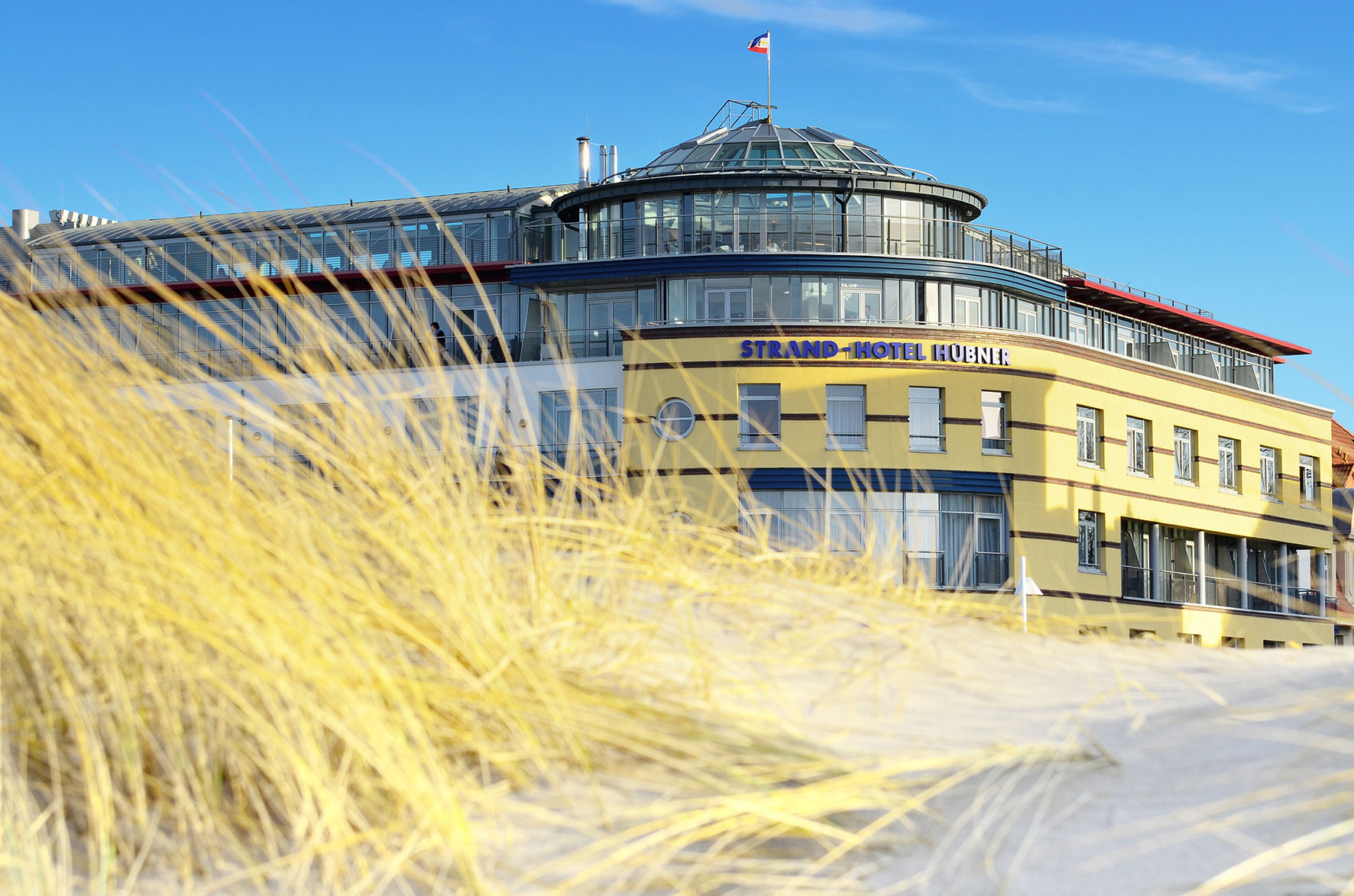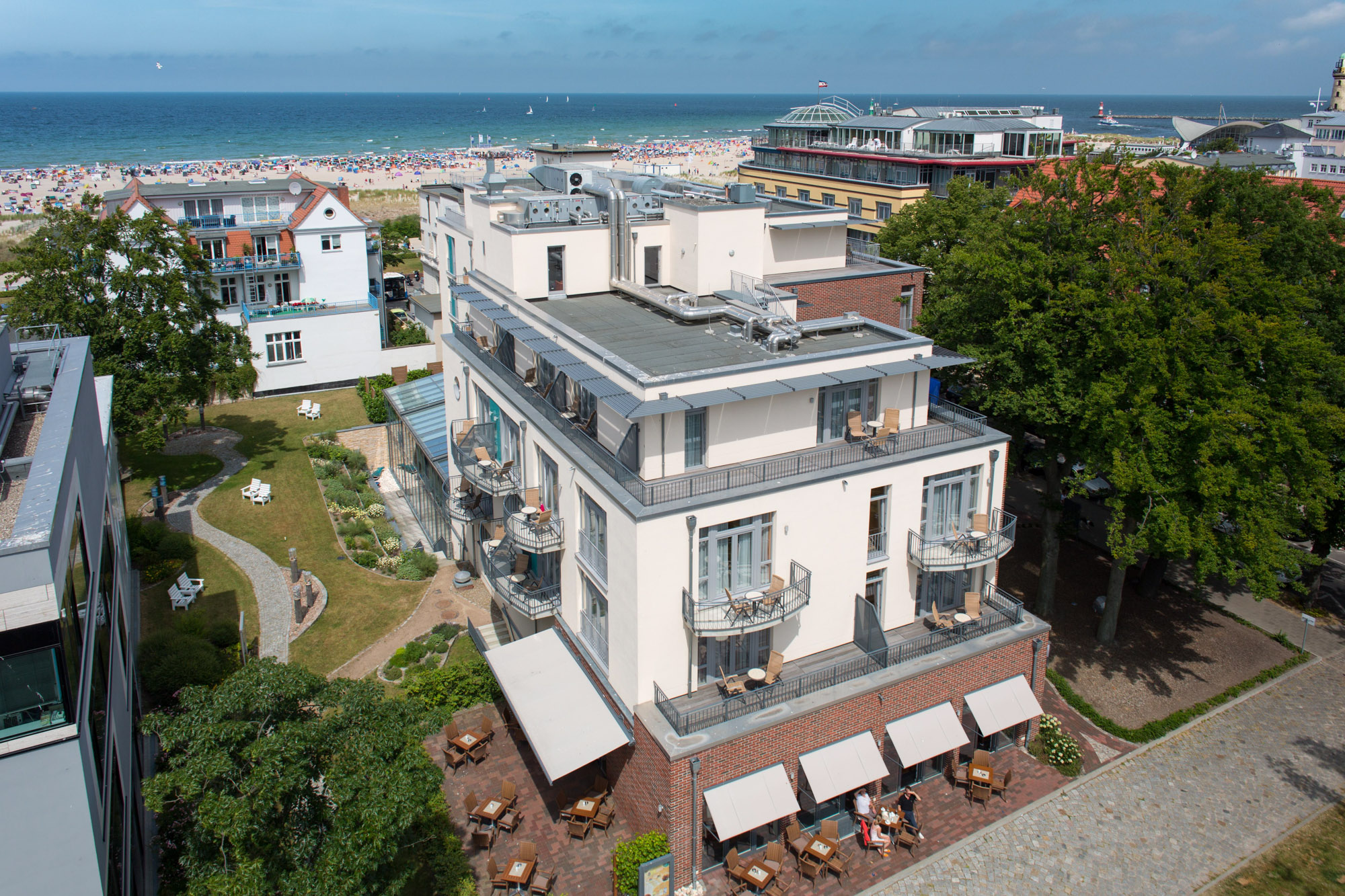Where would you like to enjoy your time out at the best price?

Wonderful Warnemünde
Our fishing village greets you – this is where you can dream without having to close your eyes
Warnemünde is a place that is very dear to our hearts – especially for those of us who get to experience it every day. At times lively and overflowing with people, at times idly daydreaming, but combined with a Nordic directness at all times.
The way the lighthouse illuminates the horizon from evening to morning, the way the Teepott with its undulating roof affectionately calls to mind the Baltic Sea, the way the fishing boats bob at the Old Harbour and unwind from their early morning voyage ... All this and much more makes Warnemünde a place that, once visited, you will want to return to over and over again. Needless to say, the Baltic itself is not entirely unconnected to this. It is what makes Warnemünde a lifelong romance.
History
The people of Warnemünde were poor. First mentioned in records in 1195, the small village was acquired by the wealthy city of Rostock in 1323. It was the only way to secure permanent access to the sea, which was of such strategic importance. At the time, Warnemünde consisted of two rows of houses running parallel to each other, which for the sake of simplicity were called "Vörreeg" (front row) and "Achterreeg" (back row).
The bailiff appointed to run the town was tasked with enforcing the interests of the citizens of Rostock, which ended in an almost outright ban on trade in 1585. Only fishermen, sea pilots and sailors were permitted to carry out their profession in Warnemünde – all other trades and professions, even simply trading in the fish caught, were prohibited. Warnemünde was hit by severe storms such as those of 1625 and 1872. Warnemünde has always been the first outpost of Rostock to be involved in military conflicts. Wallenstein had a citadel built here in 1628. In 1632, the Swedish levied a customs duty on the hill on the Alter Strom, which effectively brought Rostock harbour to a standstill for decades. Trade restrictions were eased from 1867 onwards.
Although Captain Stephan Jantzen, who became pilot commander in 1866, represented the birth of a new Warnemünde folk hero, it did nothing to alter Theodor Fontane's highly unfavourable description of the town when he visited it in 1870: "It would be charming if it weren't so charmless." The mail steamer service between Denmark and Warnemünde, which had existed since the end of the 19th century, became a railway ferry service in 1903 with the opening of the Neuer Strom. This gave the Alte Strom its current name and simultaneously ended its significance as a harbour exit. The wicker beach chair, or Strandkorb, now a fixture on many beaches in Germany, made its debut in Warnemünde in 1883.
On 1 May 1945, Red Army troops occupied the town, thus bringing the Second World War to an end for Warnemünde. The first new industrial site was established with the construction of the Warnow shipyard.
New ships started to be built from the mid-1950s onwards. The maritime canal was dredged to enable construction of the new international port to begin. The few remaining hotels were taken over for the now state-owned spa industry, which was referred to as a "holiday service". These days, Warnemünde is a major seaside resort in the north-east of Germany, which is visited by hundreds of thousands of people each year.
Magnificent white sandy beaches invite guests to stroll, sunbathe and unwind. Holidaymakers started coming here in 1817. The beach at Warnemünde continues to be extremely popular today, but even with so many people swimming in it, the quality of the water in the Baltic Sea is excellent. Anyone on holiday here can expect to experience all the different moods of the sea, from becalmed waters to slightly choppy waves and roiling spray.
However, Warnemünde has more to offer than just white sand, clean water, the sound of seagulls and the salt scent of the sea. Quaint cottages, winding alleyways and exclusive boutiques interspersed with cafés, bars and restaurants are typical of this Baltic seaside resort. The Alte Strom is the perfect place for a stroll, with swimmers, holidaymakers and locals bustling along the promenade. The lighthouse offers a panoramic view of Warnemünde where you can watch ferries and cargo ships leaving the harbour.
It's easy to feel at home here. It's not a coincidence that so many people come here on holiday and come back over and over again. Warnemünde is arguably the most popular district of Rostock. Where else would you find the like – a city with its own seaside resort or a seaside resort with its own city? Perhaps the charming town centre, the Mühlenstrasse, the quaint church and the old fishermen's and captain's houses on Alexandrinenstrasse have something to do with it.
It could also be the annual transformation of the seaside resort from a cosy, somewhat sleepy little town in winter to a lively, modern and popular seaside resort in summer. Perhaps it is the people of Warnemünde, an independent and hardy tribe, who for centuries had to defend themselves against the domination of their neighbours in Rostock, who were not always benevolent. If you haven't already fallen for Warnemünde, you're sure to grow to love it and will want to come back here over and over again.


